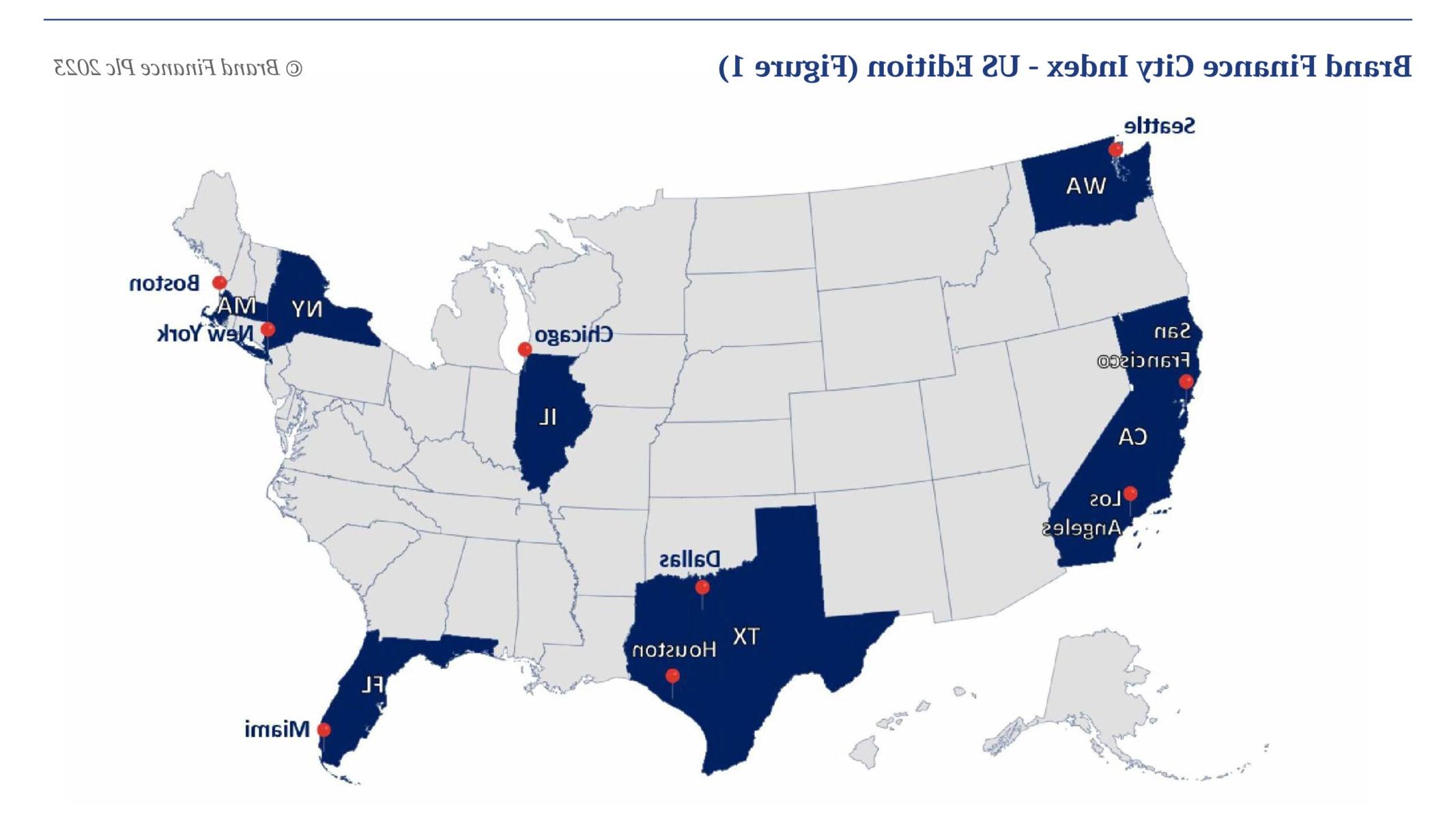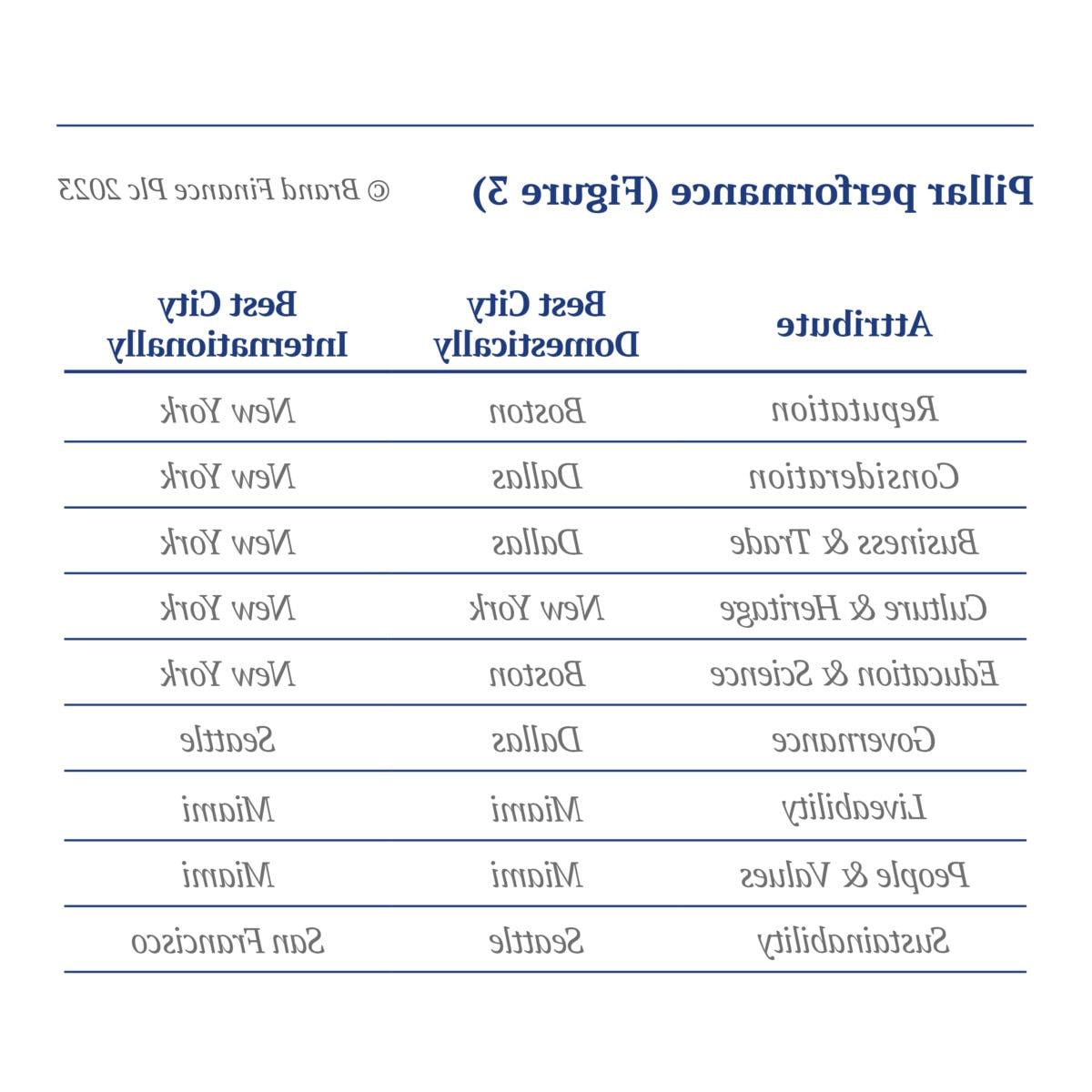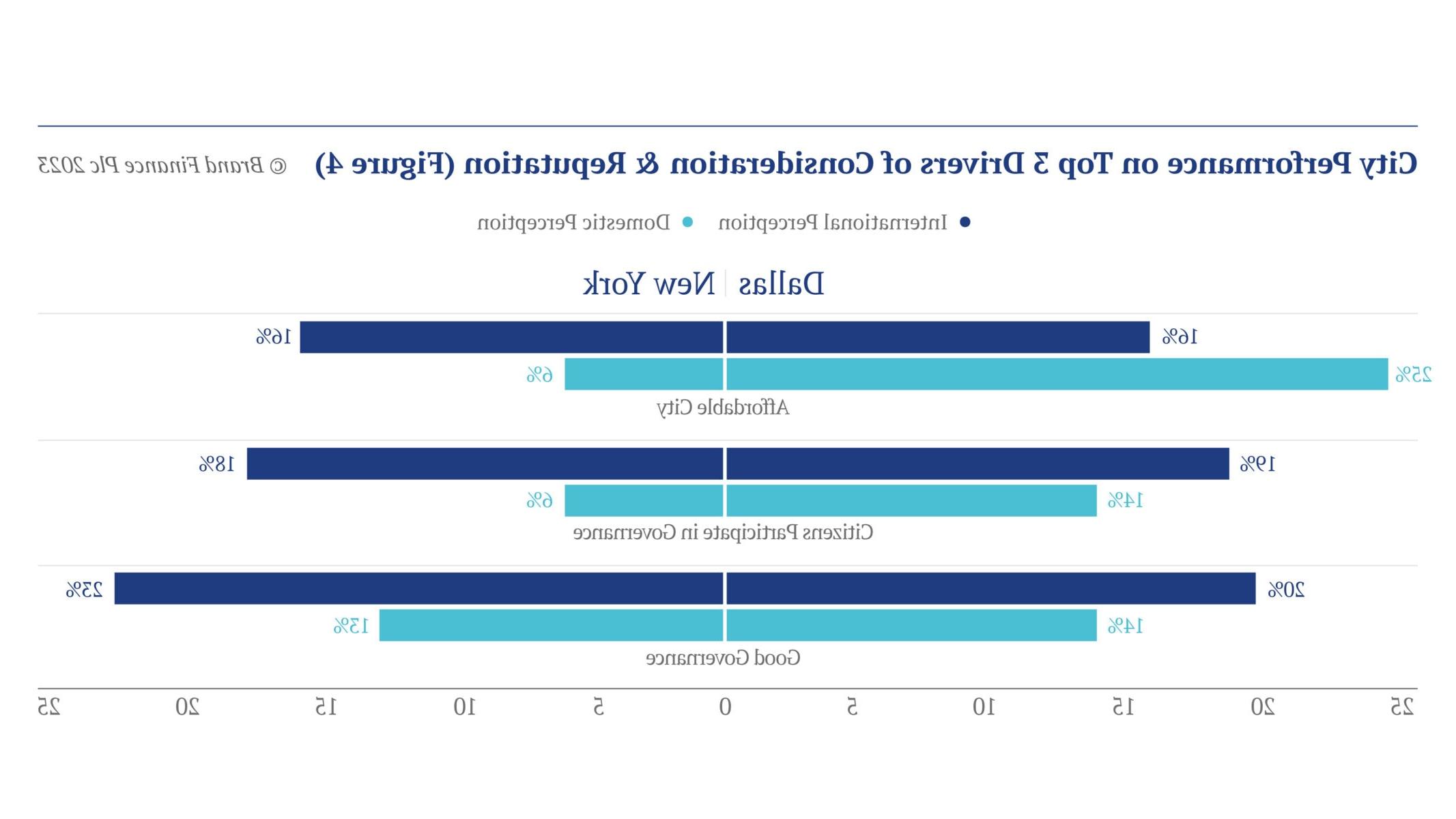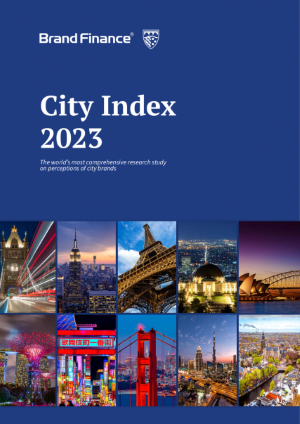*The Halo effect is when one positive trait about something is used to make an overall judgment of that thing. The Horn effect is a type of cognitive bias that happens when an individual makes a snap judgment about something on the basis of one negative trait.

In the Brand Finance City Index 2023, nine American cities have achieved an impressive position within the top 50 best-perceived cities out of 100 global cities ranked.
The index, however, only looks at perceptions of non-domestic audiences. It is widely believed that the views of domestic respondents tend to differ from the perceptions of the outside audience. In this article, we will uncover how domestic perceptions of American cities differ from international perceptions and why matching internal and external perceptions should be one of the top priorities of city-branding strategies. Figure 1 shows the geographical distribution of the cities, ranging from the East Coast to the West Coast of the US.

The Largest and the Smallest Perception Gaps
The following cities were covered in the research: Boston, New York, Miami, Chicago, Houston, Dallas, Los Angeles, San Francisco, and Seattle.
According to a weighted average of 59 attributes, the highest perception gap currently exists for Los Angeles, New York, and San Francisco (see Figure 2). International audiences see these cities as more appealing for studying, working, investing, retiring, visiting, and permanently relocating than domestic respondents.

Esta é uma ótima notícia para Los Angeles, que sediará os Jogos Olímpicos de 2028. Ao alavancar os atributos em que Los Angeles supera, como diversas e
Multicultural (40%), ótimas compras, restaurantes e vida noturna (39%) e estilo de vida atraente (38%), as campanhas de comunicação global podem ser adaptadas para obter um número maior de visitas.
A menor lacuna de percepção observada está em Dallas, Boston e Miami. Isso descreve que as vistas, em média, são bastante semelhantes. São Francisco é considerado a cidade dos EUA mais sustentável, segundo os entrevistados de 20 países, enquanto se acredita que ele seja Seattle.
Although, after a thorough analysis, domestic audiences tend to have stronger opinions on Culture & Heritage, Livability, and People & Values.
Pillar Performance
When it comes to pillar performance, New York leads among 5 pillars according to the international audience, while Dallas is the leading city across 3 pillars according to the domestic audience. San Francisco is considered the most sustainable US city, according to respondents from 20 countries, while domestically it is believed to be Seattle.

Trabalho local
Usando a análise de regressão para identificar os fatores de consideração e reputação para trabalhar localmente, os entrevistados dos EUA percebem a acessibilidade, a participação na governança e a boa governança como os três principais fatores.
Quando plotamos (Figura 4) O desempenho de Dallas e Nova York no mercado interno e internacionalmente, a diferença de percepção é inclinada para as visões internacionais. Esta é uma descoberta importante, à medida que as cidades que se esforçam para atrair negócios e talentos do exterior devem garantir que as percepções de "forasteiros" se alinhem à realidade factual de sua cidade. Depois que essas questões são identificadas, o próximo passo é trabalhar em campanhas informativas destinadas a corrigir esses vieses. As lacunas de percepção, deixadas não gerenciadas, criam riscos potenciais de reputação para essas cidades no exterior, e sua administração deve ser uma das principais prioridades entre os oficiais de marketing de destino.
The only significant difference is the views of affordability of Dallas according to domestic audience, which perceives Dallas as more affordable compared to the international audience. This is an important finding, as cities that strive to attract businesses and talent from abroad must ensure that perceptions of ‘outsiders’ align with the factual reality of their city. Once such issues are identified, the next step is to work on informational campaigns aimed at correcting those biases.
Conclusion
Domestic respondents are brand ambassadors of their own nations as well as the cities in which they live, study, or visit. Perception gaps, left unmanaged, create potential reputational risks for such cities abroad, and their management should be one of the top priorities among the Destination Marketing Officers.
To find out more about what attributes your city might have a significant perception gap on, request your own City Perceptions Report by emailing [email protected].

